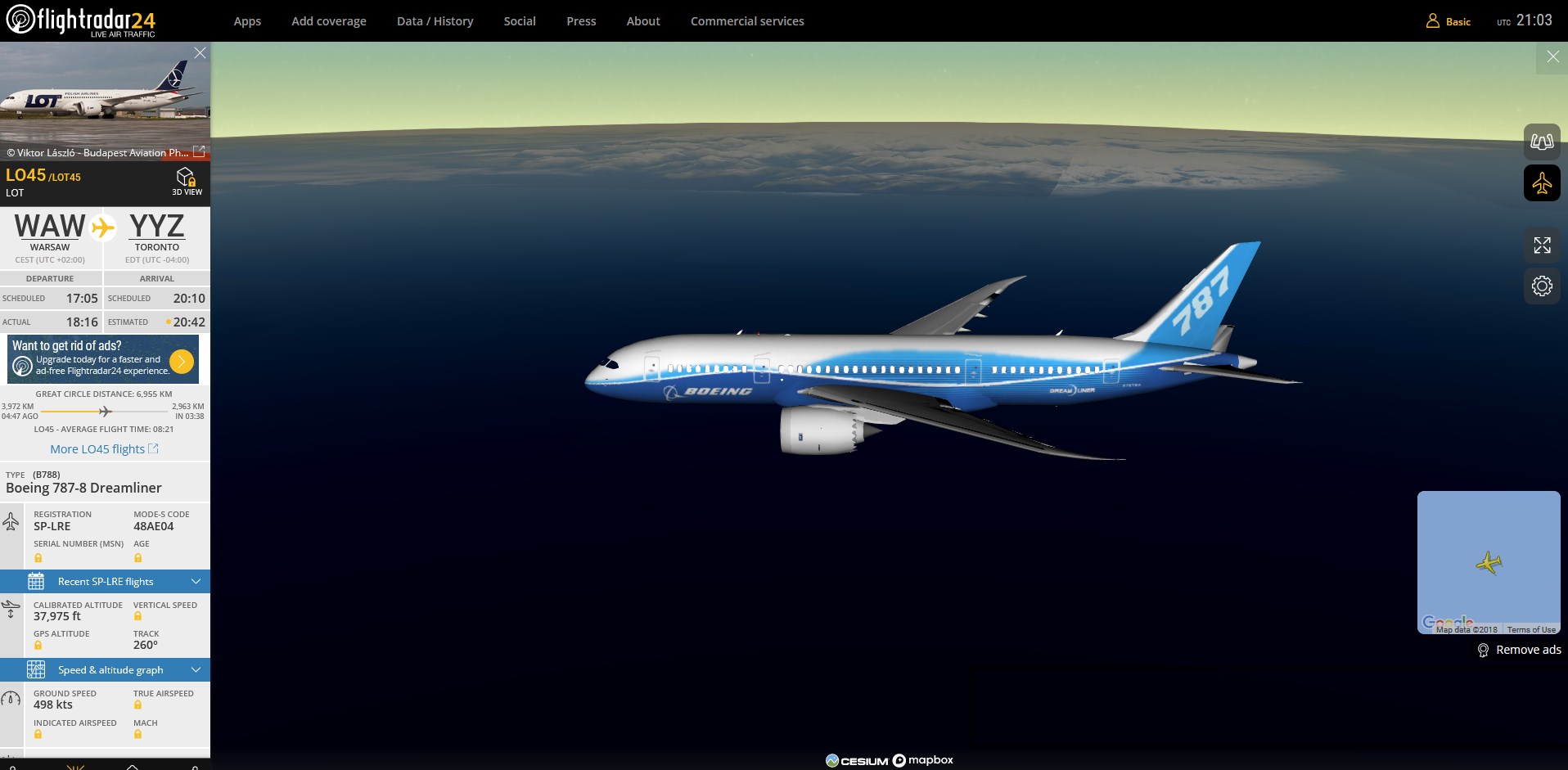Flightseeing is a kind of sightseeing from a plane or drone. I will focus on this first. When you have a window seat you are able to have a view outside. Some people use the window seat to have a nap during the flight. This seat is far more comfortable than others. In this article, I would like to describe how to make your flightseeing as much efficient as possible.
In the opinion of many people, there is no sense of watching the ground from the plane except for the high mountains with crags and tors. Usually, this terrain is much higher than its surroundings, in effect, the haze layer is thinner making the view clearer unlike lowland and sea-level areas. Moreover, sometimes these lands are higher than the planetary boundary layer, thus looking more clear in the “free atmosphere”. Low-altitude lands are usually covered by thicker layers of haze, which makes them bluish and not clear enough. In this case, flightseeing is more difficult and may require the long-lenses to cover it better.
Nowadays flight journeys are egalitarian. Planning the flightseeing begins real when we decide to go somewhere by plane. Mostly choosing your flight destination plays the leading role in flightseeing. However the way how will you travel by plane there depends on you. As I said in my previous article I am not a person, who wastes the time during a flight. In terms of this, I would like to bring you a little advice on how to plan your flightseeing effectively. Recent articles were focused on taking pictures from the plane in general. Now is the time for the explanation of which places and objects can we memorize from the plane.
- Firstly you should consider your flying route. How to do it? Honestly, you don’t have a choice on short routes. For instance, when you are going to fly from London to Madrid regardless of the airline the route is more or less the same. In the case of long-haul flights, you can select these airlines, which offer flights with a stopover. For example, when you are planning to fly from London to Shanghai you have at least a few options to adjust your route. Except for the airlines, that offer a direct flight, there are other ones, in which a stopover is necessary. For example, when you would like to see the Himalayan Mountains best choice will be a flight with a stopover in Dubai or Doha. Whole advice refers to the situation where you would like to see some particular region of the World from a plane. In another case, the adjustment of your flight route will depend on your duration preferences and alternatively the place, that you would like to see on your stopover.
- Check your flight. When you have not done it before booking probably you don’t really care about flightseeing enough. This thing is straightforward because you should get the flight number during your reservation. In another case, you can always write down your flight (airline + airports) in Google research and check it quickly.


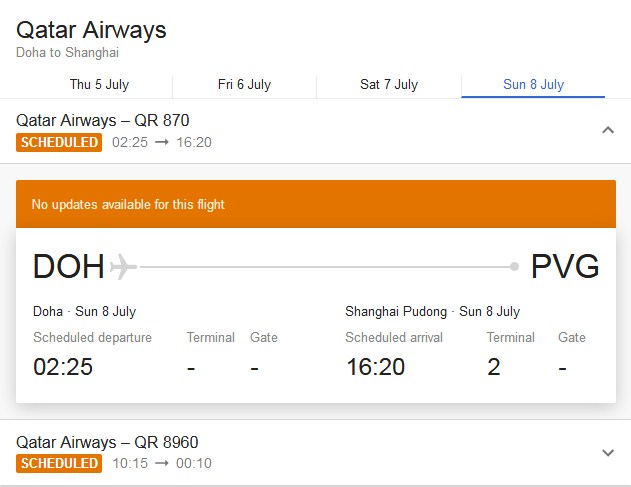 When you have your flight booked you can analyze the typical flight route. The best way is to use the Flightradar24.com website, which includes the data/history section. There you can find a huge world airline database sorted by airports, airlines, aircraft, and flights. In the 2nd point above I have described the quickest way to check your flight number. We will select it then in the Flightradar24.com service (the “flight”) section. Being there you have another 3 options, where the “Search for flight (by flight number) is the most convenient for us. You will get the 7 days flight history when putting the flight number in the bracket (Pic. 4).
When you have your flight booked you can analyze the typical flight route. The best way is to use the Flightradar24.com website, which includes the data/history section. There you can find a huge world airline database sorted by airports, airlines, aircraft, and flights. In the 2nd point above I have described the quickest way to check your flight number. We will select it then in the Flightradar24.com service (the “flight”) section. Being there you have another 3 options, where the “Search for flight (by flight number) is the most convenient for us. You will get the 7 days flight history when putting the flight number in the bracket (Pic. 4).
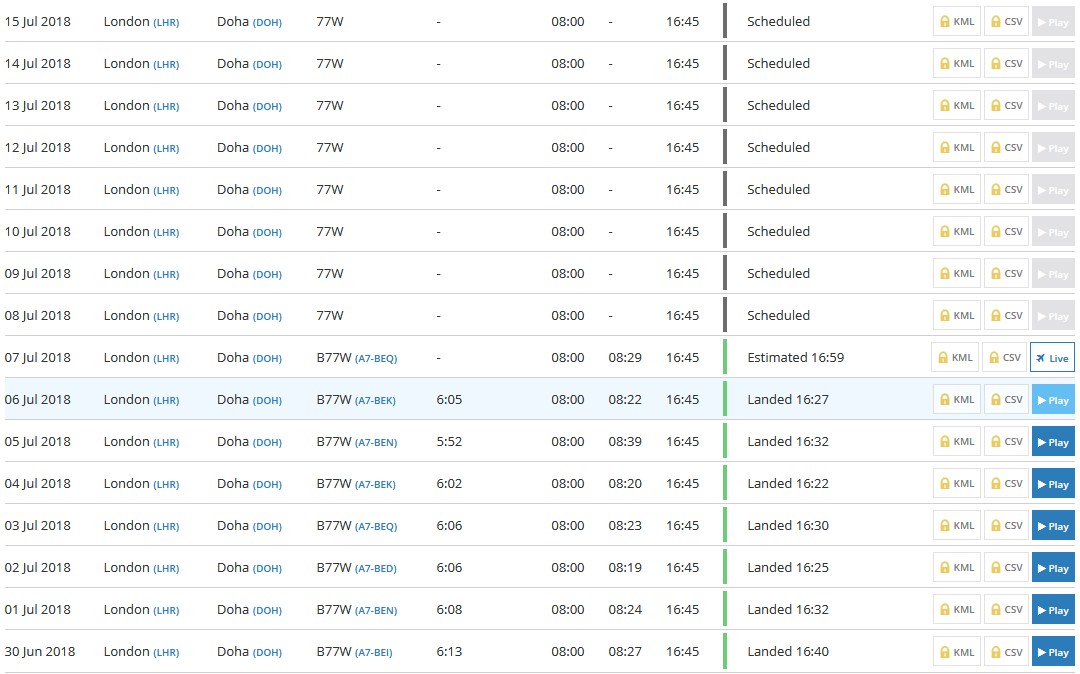
Pic. 4 The list of current flights of Qatar Airways from London (LHR) to Doha (DOH). Click the “Play” button to see the flight route (Flightradar24.com). For payable accounts, this history includes all flights with 90 days to 1 year back. Moreover, the .kml files option will enable you to check the route on Google Earth. When you prefer a basic option only (like me) you will be deprived of these options. Otherwise, you can try to get a .kml file from the flight on other websites. It doesn’t mean that you won’t make it. Option “play” is available for everyone and gives you a great opportunity to check the details of your flight route (Pic. 5,6).

Pic. 5 The fragment of the flight route from London (LHR) to Doha (DOH) above south-east Turkey and Kurdistan, from where the prominent volcanoes are to be seen when favorable weather conditions: yellow: Suphan Dagi volcano, 4068m.a.s.l (100-150km distance), red: The Ararat Mountain 5137m.a.s.l (250-300km distance). 
Pic. 6 The flight route from Doha (DOH) to Shanghai (PVG). Yellow encircled Himalaya Mountains are to be seen from a 230-300 km distance when favorable weather conditions (Flightradar24.com). Sometimes there are no recent flights provided because the list of recent flights is updated from time to time and finally you can see the forthcoming flights instead of previous ones. If so there is an alternative option to check your flight route when selecting the “Switch great circle route”, which should show you a red dotted line on the map. This line set the shortest way between departure and arrival airport (orthodrome). The real “line” of flight can often differ from the great circle line due to e.g local weather conditions, air traffic, etc. It is always far better when earlier flights are available to view on this portal. Then you can compare the real flight with the great circle route (Pic. 7,8).


Pic. 7,8 Total flight from London (LHR) to Shanghai (PVG) shown in real conditions against the great circle route (red dotted line). The red arrow shows the “Great Circle Route” option (Flightradar24.com). Having the problem of flight route sorted you will be able to assess what exactly will you theoretically see during your flight. Flightradar24.com is not the only Web service. There are at least a few more, where you can find your flight with data history also. An alternative way to prepare your .kml file for free also exists, as I have mentioned above. I described this solution in my previous article. Nevertheless, Flightradar24.com has the biggest flight data archive. On top of typical real-time flight trackers on the web you can be issued with mobile apps, that help you check the estimated flight route and track your flight in real-time, though it can be useful when you are already en route and have internet access in the plane (Pic. 9 – 15).

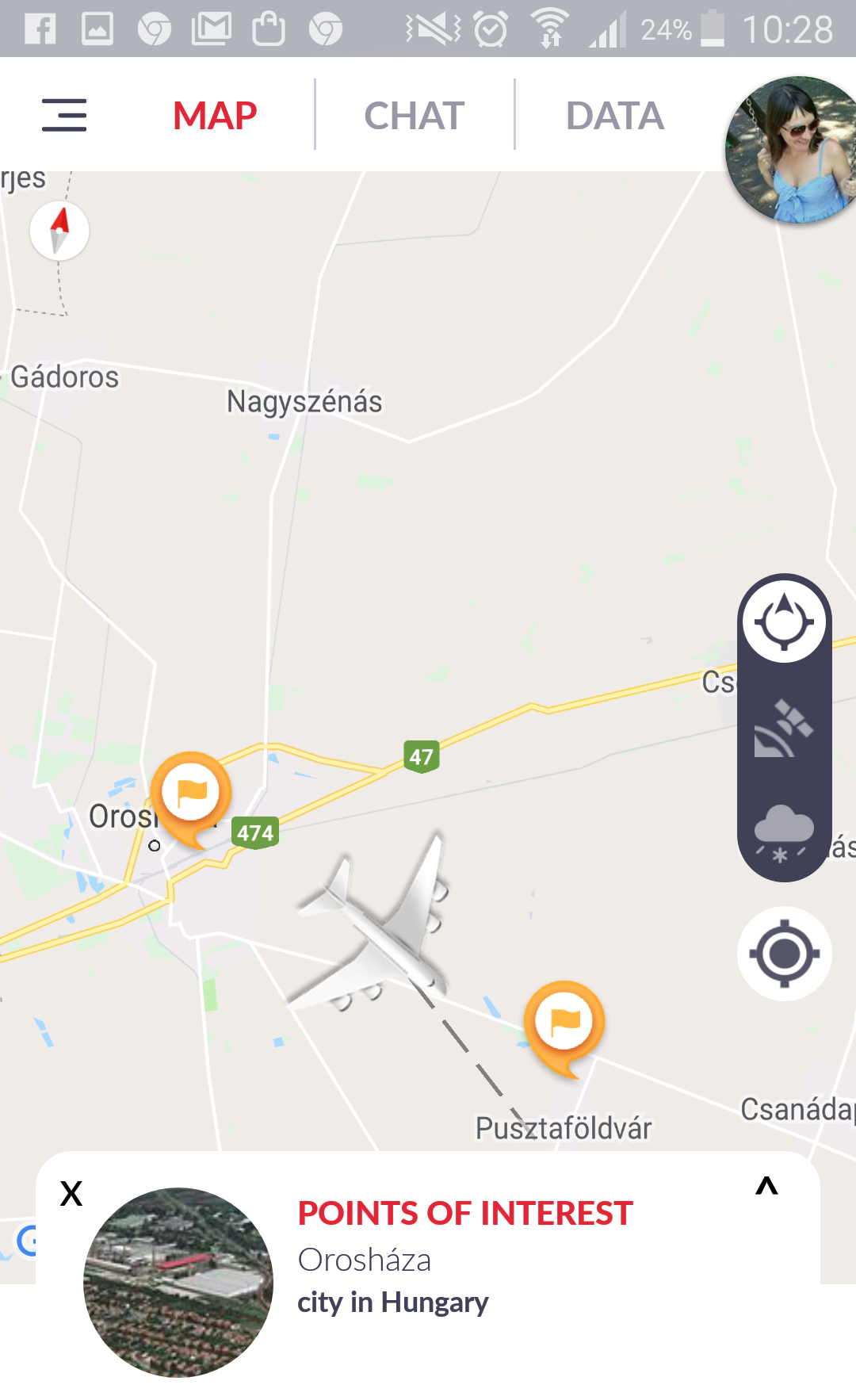
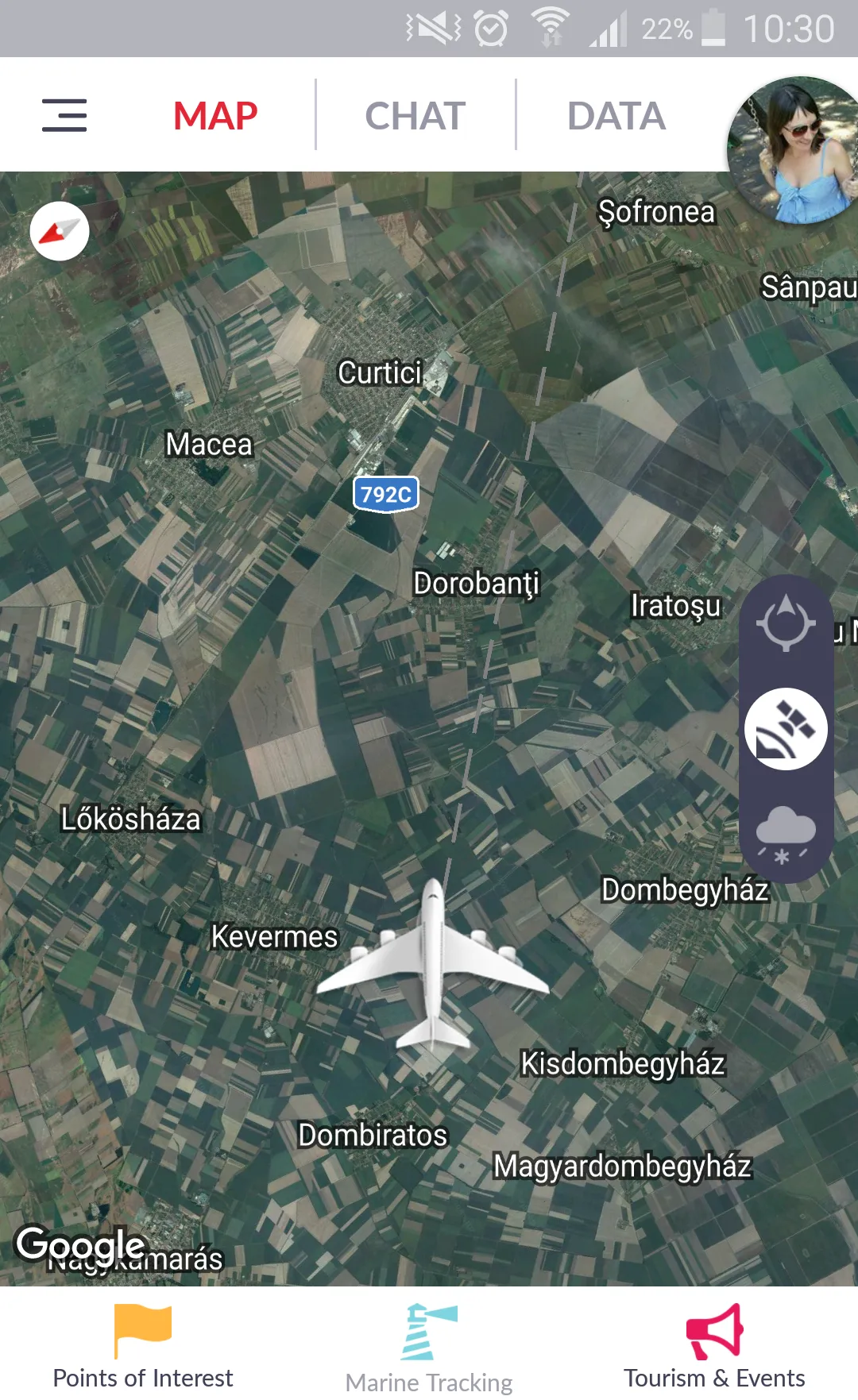
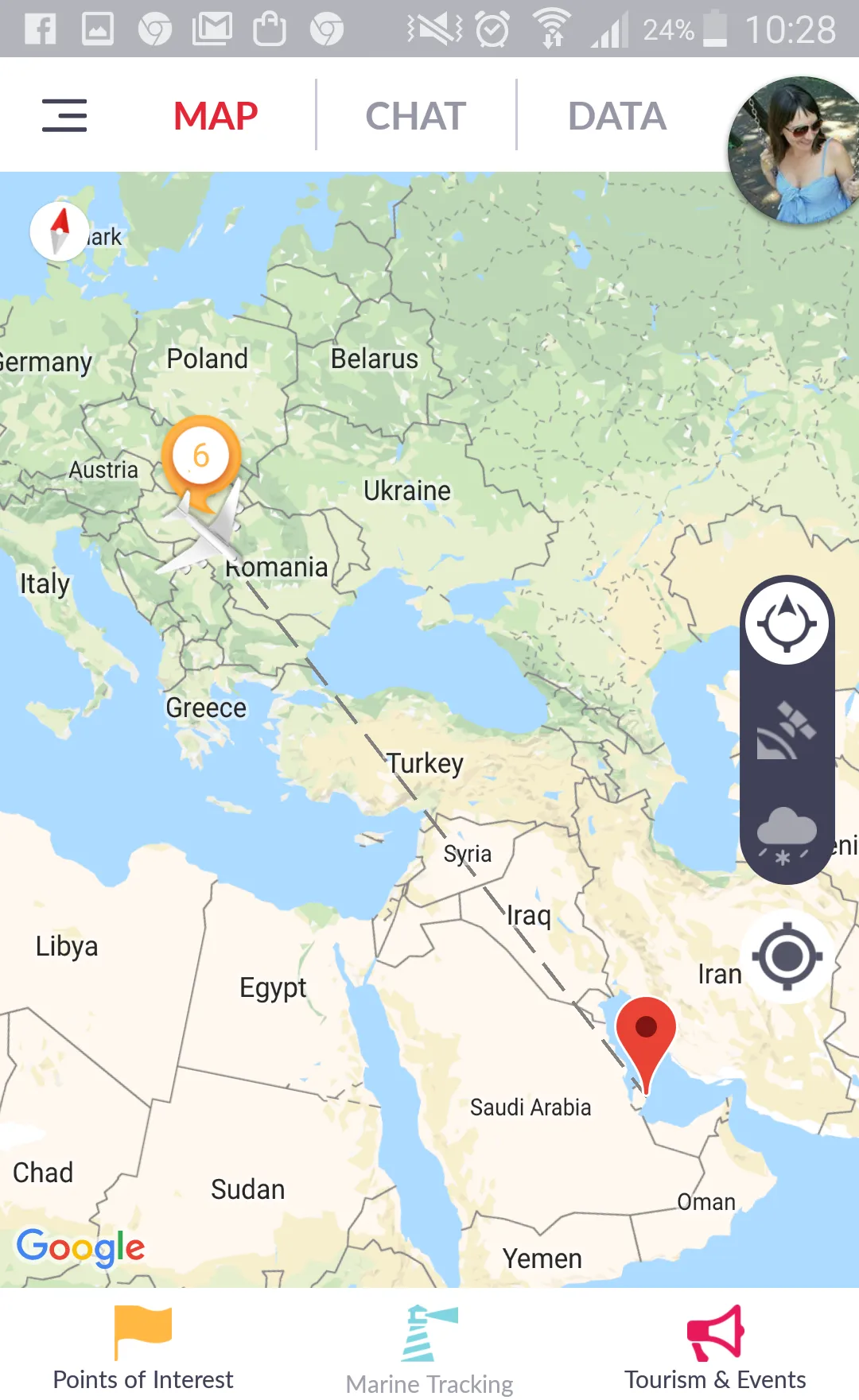
Pic. 9 – 12 InflightInfo App provides a detailed real-time view of your flight, with the most remarkable touristic places in the area above you are flying (Pic.10), satellite view (Pic.11), and overall route view (Pic. 12). 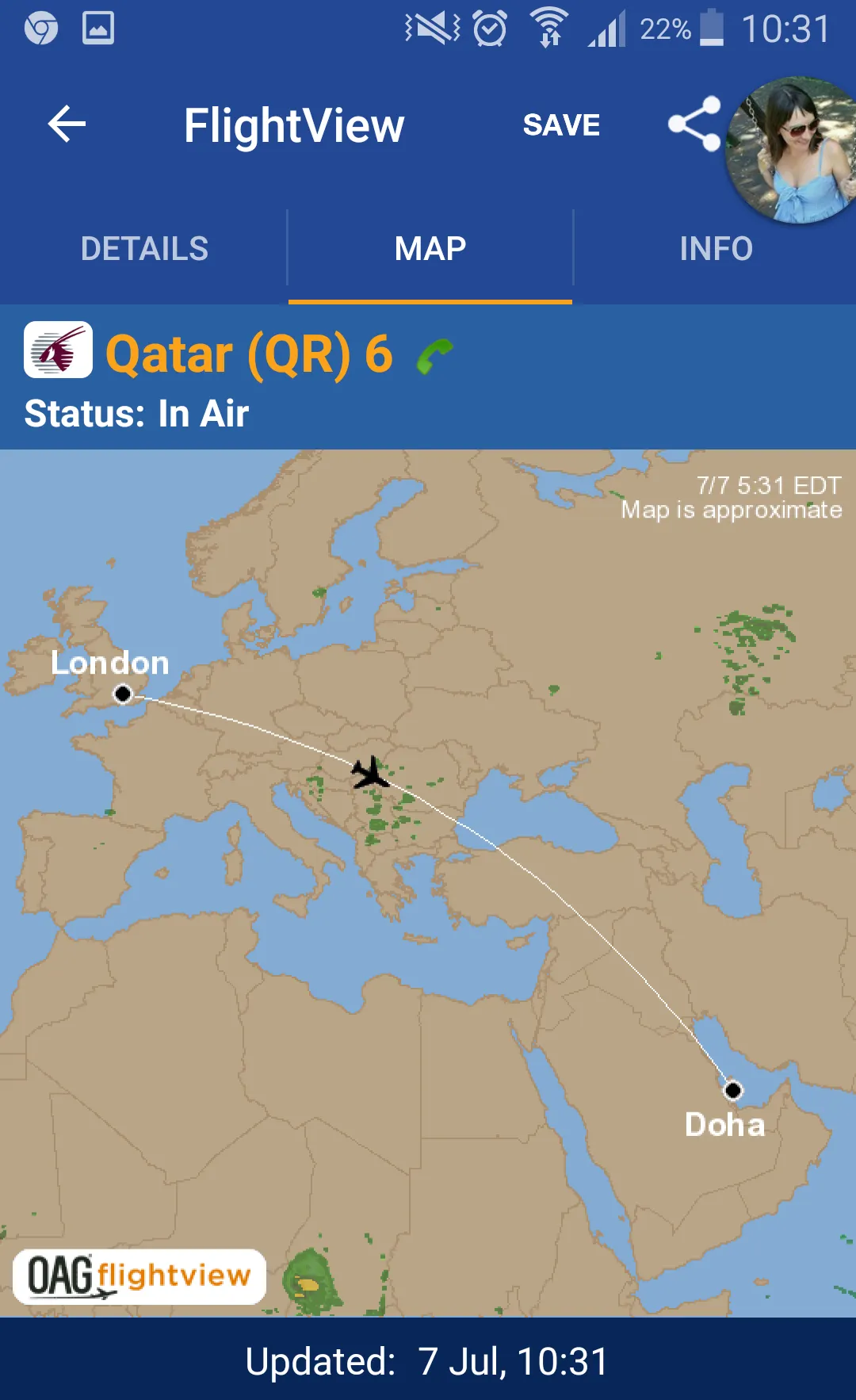
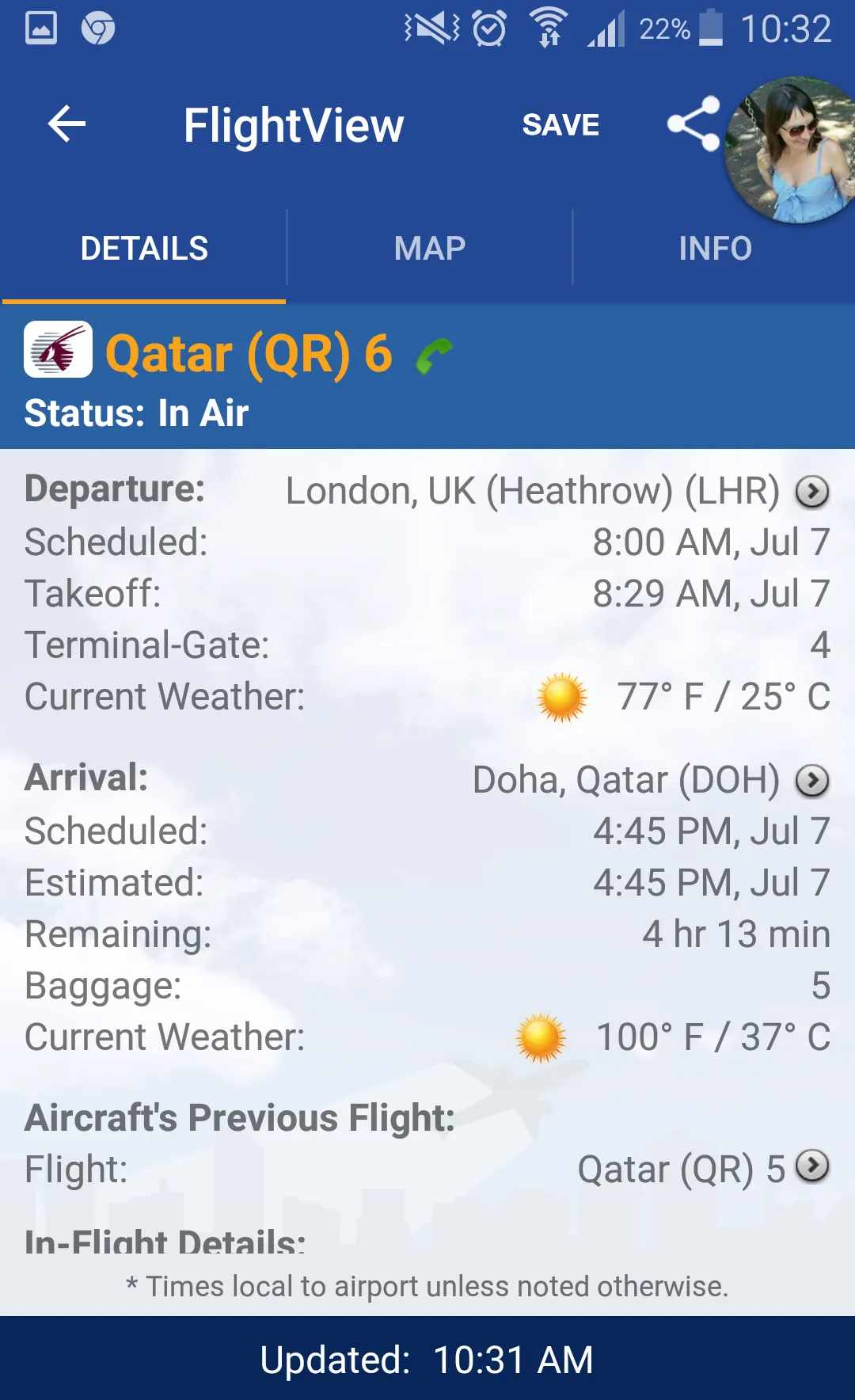
Pic. 13, 14 The FlightView Free app: 13 – overall map of the flight (LHR – DOH), 14 – the flight details. 
Pic. 15 The FLIO App interface. Anyway, there are a lot of options to analyze your flight route. An alternative option for insight into your flight route is the cockpit view (Pic. 16 – 19). This option is available on the Flightradar24.com server for a basic account. You can see the plane location in real-time and due to this check the regions are clearly visible from the passenger view.

Pic. 16 The Paris – Dubai flight cockpit view with the possibility of watching the Alps Mountains through the starboard (Flightradar24.com). 
Pic. 17 – 19 The flight from Warsaw (WAW) to Toronto (YYZ) (LOT Airlines) with the possibility of watching southernmost Greenland when seating on the starboard (Flightradar24.com) 4. What would you like to see? Above I have described the ways to check your route. Now you need to be precise about which side of view will be more interesting for you. If you are going to do a round trip then fine, but if you planning to go only one way on this route or on your way down will be dark This consideration can be important. I always chose a more interesting site on the first route, because on the way back can be cloudy and even in daylight conditions I will see nothing. For example, when I am planning to go from Amsterdam to Marseille I will choose the right side first because the view can be more interesting (the Alps) (Pic. 20).

Pic. 20 Possibility to see the Alps during the flight from Amsterdam (AMS) to Marseille (MRS) (EasyJet) when seating on the left side of the aircraft (Flightradar24.com). In another example, during the flight from Kathmandu to Singapore I would also sit on the left side because Mt. Everest and Kanchenjunga are to be seen there (Pic. 21).

Pic. 21 Flight from Kathmandu (KTM) to Singapore (SIN) (Singapore Airlines) with the possibility to see Mount Everest from around 130km distance when seating on the left side of the aircraft (Flightradar24.com) When you know what side of the plane are you interested in you must choose your plane seat. The best website, where you can check the seat properties in all types of aircraft is Seatguru.com. It is highly advisable to check the plane seat properties on this server especially when you would like to have a great view outside without the missing window (Pic. 22).
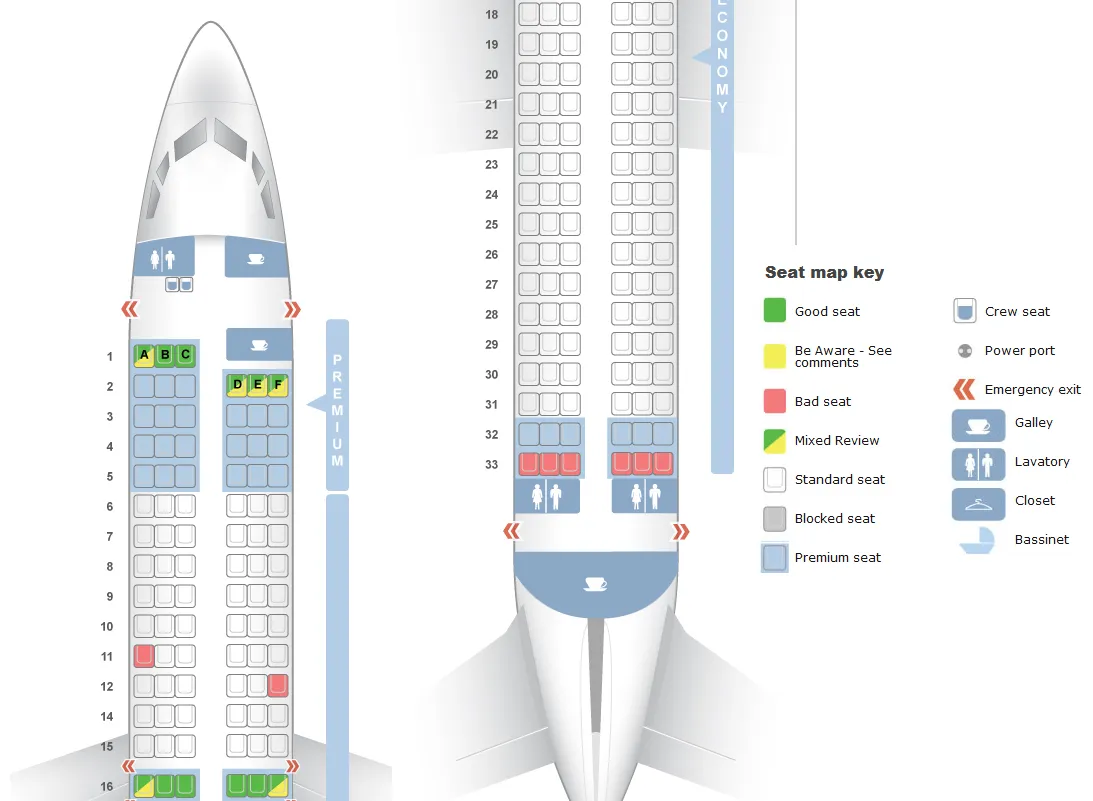
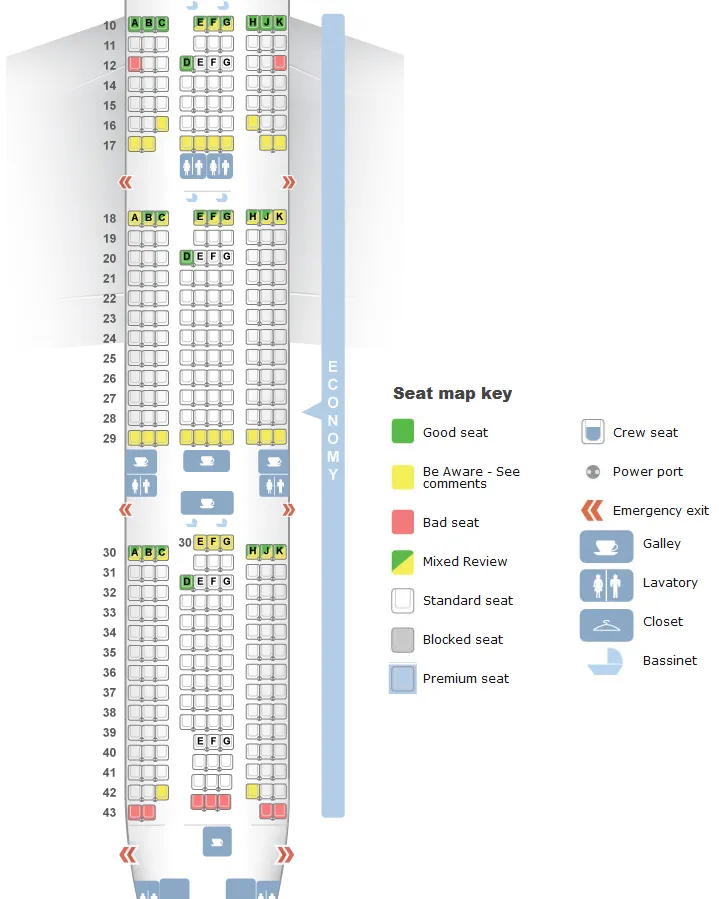
Pic. 22, 23 The seat map for the aircraft: 22 – Ryanair, 23 – Qatar Airways. On top of that, you can consider which seat will be the best for you possibly as far as possible from the wings. To be honest, the best are the seats between the front and the wings, however, we should consider safety also. The safest seats on a plane are near the tail (Pic. 24, 25).
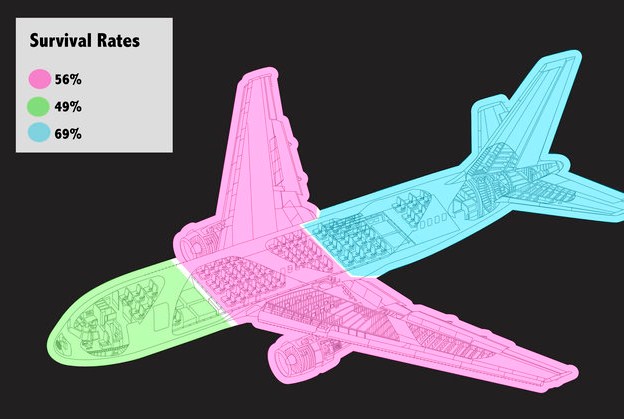

Pic. 24, 25 The safest seats in the aircraft (Credits: Popular Mechanics) Why the best seats for flightseeing are near the front? Because when you are sitting your eyes are headed front. It is quite difficult to turn your head back. Even if you do this you will not be able to have the same angle of view as when you are looking ahead. Hence the seats near the tail are slightly less favorable for flightseeing purposes, although this is a small detail. Safety is undeniably much more important, so I advise you to take a seat near the tail then. In the near future, the way of choosing a plane seat will rapidly change. Everyone will do it in the 3D mode provided by 3dseatmapvr.com (Pic. 26).
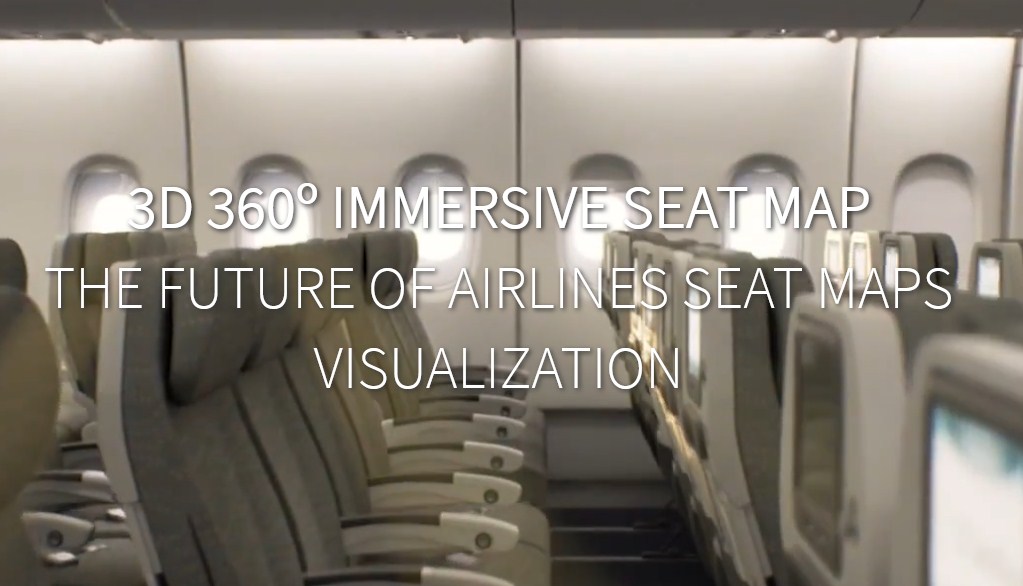
Pic. 26 The 3Dseatmapvr.com official announcement. This interactive aircraft interior visualization will be installed by Emirates Airlines first. The decision about the plane seat is very important not for flightseeing purposes only. Imagine, that this is from a few to even a dozen or so hours of your life. Moreover, you have to pay for it, especially in low-cost carriers. Other airlines like Emirates offer you a free-of-charge seat allowance from 48 hours before your departure. Then you can find a good place for you if you are lucky.
- Check the weather conditions alongside your route. I do not mean the real-time cloud cover and stuff like this, because it doesn’t make sense because the weather is often unpredictable. I mean long-time weather conditions and climate features for parts of your route. For example, when you are going to fly above the Sahara there is no point in worrying about the clouds, but if you are going to fly above India in June when the rainy season occurs then you should consider is the flightseeing worth it or not (Pic. 27).

Pic. 27 The cloud fraction map provided by NASA is one of at least a few examples, where you can asses long-term cloudiness conditions around the Globe (earthobservatory.nasa.gov). Many airlines determine the time for check-in at 48 hours before departure. This is still the time to decide where will you seat during your journey and due to this you can check the weather forecast for the most interesting parts of your route for instance if you are flying from Munich to Milan check the weather for the Alps 2-3 days ahead (Pic. 28).

Pic. 28 The numerical weather forecast is perfect for about 48 hours before departure when you can check cloudiness prediction on your flight route (modellzentrale.de). - Bear in mind astronomical circumstances. Flying during the night you will see nothing, but when your seat and window are in the sunlight that can be also bad luck. The sun on the upper troposphere is really dangerous even when you are looking through the window. I do not really mean the midday Sun but more moments, where the Sun is close to set and viewing something else through the window is less possible.

Pic. 29 Looking towards the Sun from the upper troposphere level can be dangerous also during the sunrise and sunset! It is getting safer when the Sun starts to plunge behind the horizon, Ryanair FR 2283 STN – WMI. - Clear your window, when sitting on the plane. Sometimes the plexiglass is not clear enough. Small tissue should be enough for you to make your view as clear as possible. When the external glass is dirty, well force majeure.

Pic. 30 Dirty windows can impair your view, especially when you are looking toward the sunlight, FR 3556 STN – RAK - When taking photos remember to place your camera far from the edges to avoid distortion. Read a little bit more about it here.
- The best view is just after departure and before landing the plane (Pic. 31 – 34), those are the moments, that most people don’t like. As the plane ascends the objects are getting smaller and smaller or diminish due to the atmosphere’s low transparency (poor weather conditions) to disappear behind the clouds eventually.

Pic. 31 Marrakech seen from drone-perspective, just before landing, FR 3556 STN – RAK. 
Pic. 32 The banana plantations near Tenerife South Airport (Guargacho village), FR 8166 STN – TFS. 
Pic. 33 The San Dioniso district of Manila, 5J 582 CEB – MNL. 
Pic. 34 Tagbilaran saw in a drone – perspective, just before landing, Philippine Air Asia 350, MNL – TAG. - Remember about sunglasses. Even when you are sitting on the opposite side of the Sun remember, that both the thick cloud layer and simple convective clouds reflect the sunlight intensively. Similarly, in the case of snow or ice-covered areas (high mountains, Greenland, Antarctica) and also desert areas (especially sandy with high albedo), you may suffer from blindness.

Pic. 35 A plane color, snow, or glacial surface combined with the cloud layer can cause blindness and watering eyes when watching through the window. It is advisable to have sunglasses prepared for this event. Greenland, Watkins Range, DY 7063 OSL – OAK. There are a few things, which factor into the flightseeing. I have described the problem in general, though everyone probably will find their own solutions to make this adventure better. Flightseeing is an unforgivable adventure, that allows us to see the world from a different perspective. I hope, that this article will be helpful for travelers, who during a flight desire something more than eating, watching movies, or sleeping. At the very end, I would like to summarize everything and say: consider and next check your flight route, choose the window near the tail, and don’t forget your sunglasses.
Mariusz Krukar
Links:
1. https://www.flightstats.com/
2. flightradar24.com
3. Flightaware.com
4. https://planefinder.net/
5. https://www.radarbox24.com/
6. http://www.aeroseek.com/
7. https://flightwise.com/
8. Kayak flight tracker
9. Holiday extras flight tracker
10. https://www.oag.com/
11. Airlinequality.com: Finding the best seat
12. 10 facts about flying, that can baffle you
13. The safest seat on a plane
14. http://www.seatplans.com/
15. https://www.seatguru.com/
16. http://3dseatmapvr.com/
Movies:
Read also:
1. How to capture a picture from the middle of the plane?
2. Long lens photography from the plane – how it works?



